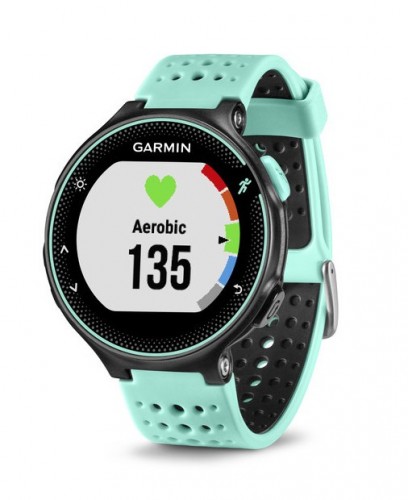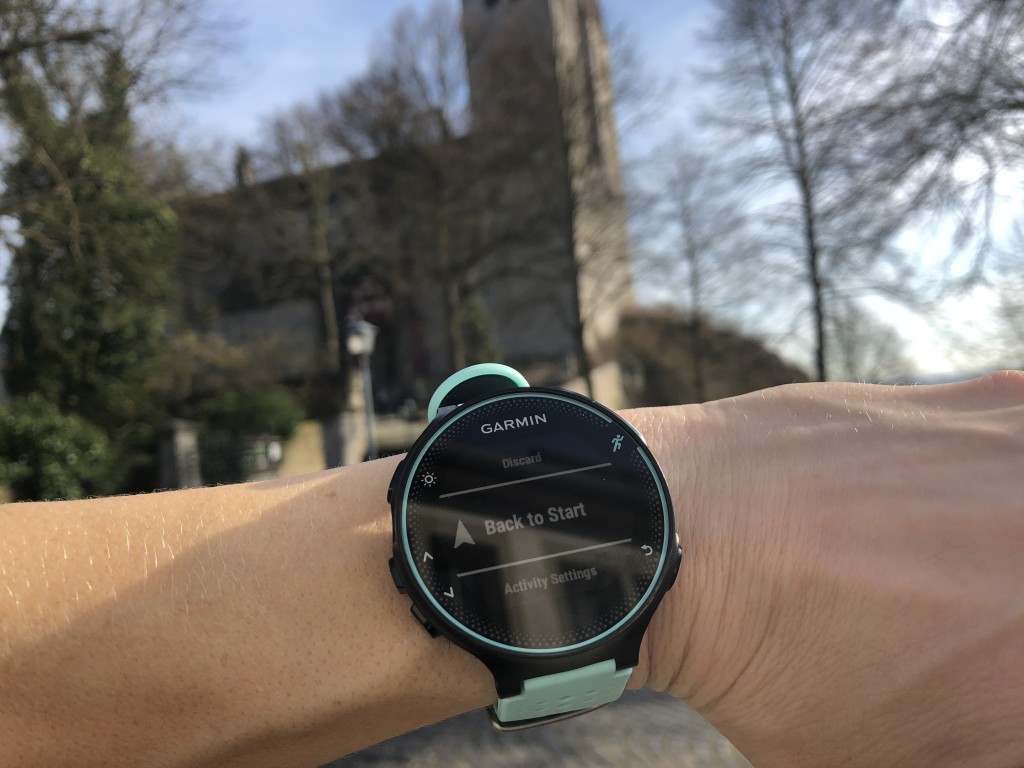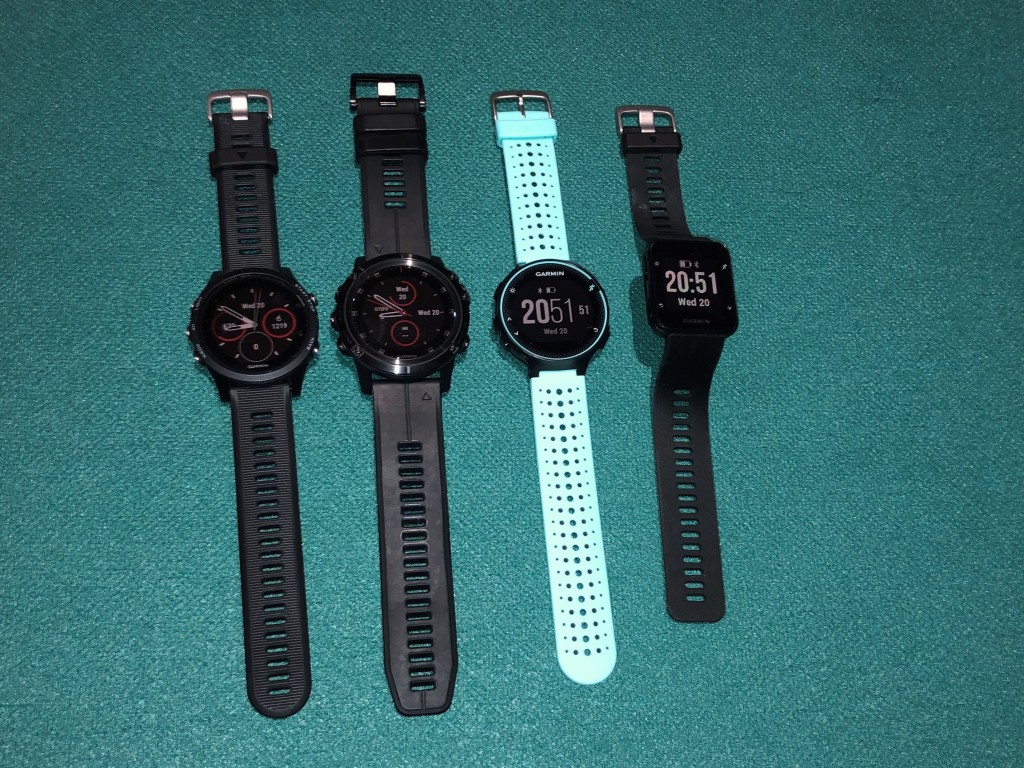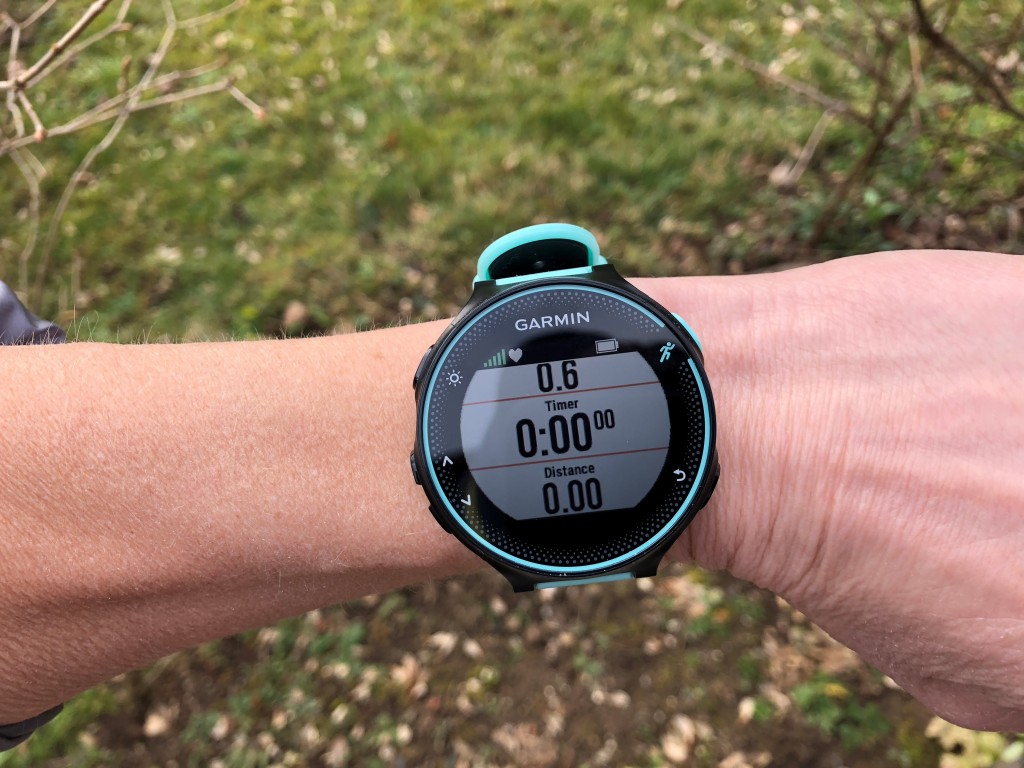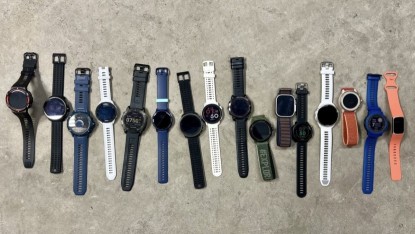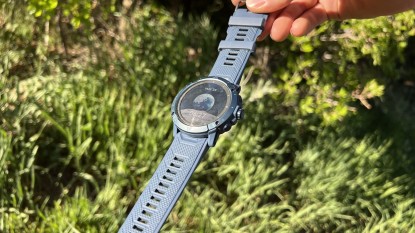Garmin Forerunner 235 Review
Our Verdict
Our Analysis and Test Results
The Forerunner 235 is not as flashy as some of its Garmin cousins. But, for the price, you get a watch with a lot to offer.
Performance Comparison
Features
The Forerunner 235 was designed primarily for runners. It can also be used to track cycling activities and “other outdoor activities,” but these options are not its main focus. Because of this, Garmin is able to pack a lot of running-specific features into the Forerunner 235 without breaking the bank.
The Forerunner 235 supports both GPS and GLONASS satellites to increase coverage and accuracy. And that's not the only difference that justifies the increase in price. The Forerunner 235 also offers two very important features, similar to the much more expensive Forerunner 935, namely, downloadable workouts and the “Back to Start” navigation option.
Downloadable workouts can help you optimize your goals. Basically, you build your workout in Garmin Connect and then put it on your watch. The Forerunner 235 will then alert you (vibrate or tone) when you are supposed to, for example, start sprinting or slow down back to a specified heart rate zone. This feature enables you to avoid looking at your watch for the time while you are doing your activity. It makes specific training plans much easier to follow when you are exerting yourself.
The “Back to Start” option on navigation is an excellent safety feature. When you are tracking your route using the GPS, if you get lost, you can just go “Back to Start” and the watch will show you a line to follow on the face. It also says how far you are from your start position. In an emergency, this could save your life!
Other advantages of the Forerunner 235, over the lower priced Garmin Forerunner 35, include a race predictor, training effect data, recovery time predictor and the ability to control music on an iPhone or Android. The Garmin Forerunner 35 can also control music, but only supports Androids. The 235 also works with Connect IQ, which is Garmin's platform to download watch faces, widgets, etc.
Some of you might celebrate the lack of Move IQ on the Forerunner 235. This is the feature that tracks your movement and recognizes if you are cycling or running without you starting an activity. It seems to be a polarizing feature in the Garmin world. Some people love to see their cycling time for running errands added to their daily activities list in Garmin Connect. Some do not. For those of you that do not, look no further, the Forerunner 235 does not have Move IQ! Another item missing in the Forerunner 235 that its sibling, the more expensive 935 offers, is a barometric altimeter. If this is important to you, you should choose the 935.
Similar to all the Garmins we tested, the 235 offers the LiveTrack function for your friends and family to track you and the usual GPS data such as distance and speed, VO2 max, cadence, and Auto Pause (for example when you stop at a red light).
For daily tracking, the Forerunner 235 covers all the basics — steps, sleep tracking, calories (using the optical heart rate monitor), distance, etc. Lastly, the Forerunner 235 offers the usual smattering of smart notifications when linked to your phone, including the weather, texts, and a calendar.
Ease of Use
Like most Garmin Forerunners, the 235 is fairly easy. Its menus and settings are clearly labeled. With a few button pushes, you can almost always find the feature, menu, or setting you are looking for. The five buttons around the face are also labeled so you can figure out what button does what. After wearing it a couple of weeks, you will be able to operate it without thinking twice!
The Garmin Connect App is very extensive, so it takes a bit more time to figure out where each setting is located. Still, the titles that each setting or option have are mostly intuitive, and there is always a balance between feature quantity and ease of use. The Garmin Connect App is certainly not as simple as the Coros App, but it offers a lot more options and features. Syncing to the Garmin Connect app is easy, as is syncing to a phone so you can receive smartwatch notifications.
Battery Life
The battery life of the Forerunner 235 was judged based on a normal use basis and an activity use basis. Normal use includes being connected to our smartphone for text notifications, weather, optical heart rate monitor, etc. and running an hour every other day. We were surprised to see how poorly the battery performs under these circumstances. We got only about 4.5 days out of it. Garmin advertises that it should last up to 9 days. In the real-life conditions we tested it under, some days we had more text messages than others. These, of course, drain the battery more. Their claim is not necessarily false, but it seems unlikely with moderate to heavy use.
The Forerunner 235 battery life redeemed itself though in the active use category. We found that even with notifications on, the battery lasted just over ten hours straight during a push. This means that for most shorter ultramarathons, this watch will last so that your data will be complete! If you want to go longer than that, the 235 can be charged on the go without interrupting the data capture. So feel free to hook up that external battery!
Accuracy
The Forerunner 235 was usually only around 3% off in total distance measurements. When looking at the runs mapped against other watches, the mapped course was usually about 3 yards off. So if we were on a bridge, the line showed us swimming directly next to it. This is not too bad when you consider the price difference between the Forerunner 235 and the 935. The 235 provides more accurate mapping and distance measurements than the lower priced Garmin Forerunner 35.
The optical heart rate monitor seemed to also be somewhere in the middle of the accuracy spectrum, so Garmin did a good job achieving an accuracy that reflected the price point.
Design
All of our testers found the Forerunner 235 to be quite comfortable. Fit is key, especially when considering optical heart rate monitors. The face was not very large but still large enough to read easily while running. And the wristband fits all of our testers, big and small.
The watch also comes in several color options if that is your thing. The 235 feels a bit cheap though. The face is glass, but the entire watch is made of lightweight plastic. It is nice to have a very lightweight watch that you forget is there. But, compared to even very similar looking watches, like the Coros Pace, the Forerunner 235 just felt a bit cheaper.
Ease of Set-Up
The set-up was very similar to the Garmin Forerunner 35. Out of the box the 235 had about 25% battery life, and after pairing it with our phone and syncing it with the Garmin Connect App, it was ready to go. There are “Quick Start” instructions in the box if you need them. We recommend always reading the online user's manual on the Garmin website because you can always find an extra gem that your product offers that you didn't know about.
If you decide to start customizing the Forerunner 235, you can go to the “Connect IQ” store and download compatible apps or new watch faces. Connect IQ has an extensive database of offerings, so there is something for everyone.
Value
Although it does not have a barometric altimeter, we think that for people that concentrate on running, this might be a better option than the Garmin Forerunner 935. The 235 covers all the most important features that serious runners need without breaking the bank.
Conclusion
The Garmin Forerunner 235 is a solid GPS watch designed for runners. It is a watch model that has survived several years in the Garmin assortment because so many runners love it. Whether you are a competitive marathoner or a recreational shorter distance runner, this watch is a great option.


